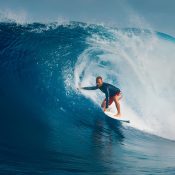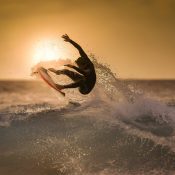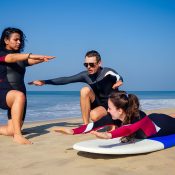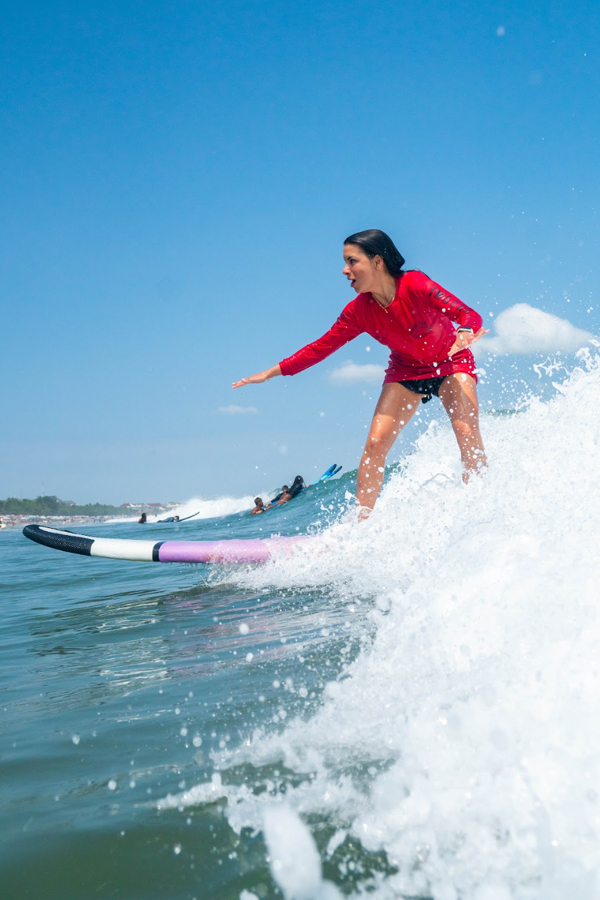Surf Progression Plan: From Whitewater to Green Waves
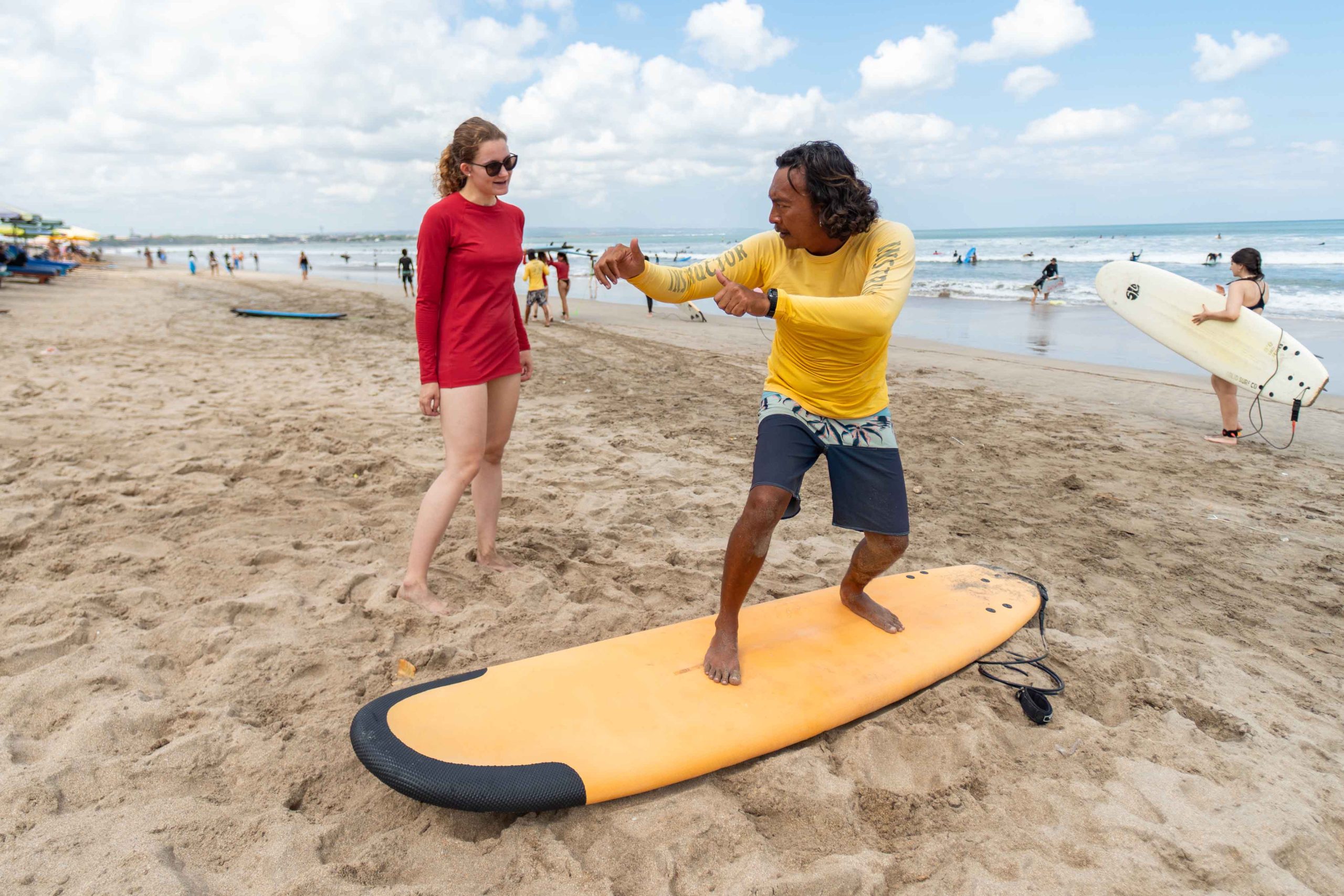
Surf Progression Plan: From Whitewater to Green Waves
Standing on the beach watching experienced surfers glide across unbroken waves can feel like watching magic. How do they make it look so easy? The secret isn't innate talent—it's following a structured surf progression plan that builds skills systematically from fundamental to advanced.
Most surfers get stuck in the “intermediate plateau” because they skip crucial steps in their development. This comprehensive guide breaks down exactly what to practice at each stage, complete with drills, timelines, and common mistakes to avoid. Whether you're struggling with your first pop-up or ready to catch green waves, this surf progression plan will transform your surfing.
Table of Contents
Toggle1. The Foundation: Whitewater Mastery (Weeks 1-4)
Why Whitewater Practice is Non-Negotiable
Before you even think about green waves, you must master these fundamentals in the safety of broken whitewater:
Stage 1 Goals & Drills
Primary Objectives:
- Consistent pop-up with proper form
- Basic balance and stance on moving board
- Controlled straight-line riding
- Paddling efficiency and wave timing
Essential Whitewater Drills:
- The 3-Point Pop-Up: Practice on sand first, then in whitewater
- Eyes-Up Balance: Keep your head up and look where you're going
- Stance Stability: Find your natural foot placement and bent-knee stance
- Paddle- Catch-Pop-Up Flow: Develop muscle memory for the sequence
Common Whitewater Mistakes & Fixes
| Mistake | Why It Holds You Back | The Fix |
|---|---|---|
| Looking down at feet | Causes immediate loss of balance | Pick a spot on shore and stare at it |
| Slow, climbing pop-up | Misses wave momentum | Practice explosive push-up motion |
| Straight leg stance | No stability or control | Athletic stance, knees always bent |
| Paddling too far back | Nose digs underwater | Position weight centered on board |
Read also: The 5 Biggest Mistakes Slowing Your Surf Progression (And How to Fix Them)
2. The Transition: Reading & Catching Green Waves (Weeks 4-12)
Moving Beyond the Whitewater
This is the most challenging transition in your surf progression plan. Green waves (unbroken waves) require new skills in timing, positioning, and wave reading.
Stage 2 Progression Steps
Step 1: Wave Reading Basics
- Identify peak formation
- Understand wave direction (left vs right)
- Spot channel currents for easier paddling out
Step 2: Positioning & Timing
- Where to sit in the lineup
- When to start paddling (not too early/too late)
- Angling your takeoff for better success
Step 3: The Committed Paddle
- Intensive, powerful paddling to match wave speed
- Final few strokes as wave approaches
- The “feel” of being caught by the wave
Green Wave Progression Timeline
| Week | Expected Milestone | Practice Focus |
|---|---|---|
| 4-6 | Occasional green wave catches | Timing and positioning |
| 7-8 | Consistent catching (50% success) | Angled takeoffs |
| 9-12 | Regular green wave riding | Speed generation and basic turns |
3. Building Your Skills: From Survival to Style (Months 3-6)
Developing Flow and Control
Once you're consistently catching green waves, the real fun begins. This stage focuses on moving from “just surviving” to actually controlling your ride.
Stage 3 Skill Development
Speed Generation:
- Basic bottom turn to redirect momentum
- Using the wave's pocket for speed
- Gentle pumping motions
Initial Maneuvers:
- Fading takeoff to set up first turn
- Basic top turn to stay in critical section
- Connecting sections with speed maintenance
Wave Selection Intelligence:
- Choosing waves that match your skill level
- Identifying waves with longer rides
- Avoiding closeouts and difficult sections
Practice Drills for Intermediate Development
- The “Two Turn” Rule: Make at least two turns on every wave
- Eyes Follow Hands: Your turns follow where you look
- Quiet Upper Body: Generate power from lower body, not arms
Read also: How to Break Through a Surfing Plateau: Advanced Techniques to Level Up
4. Bali-Specific Progression Spots
Where to Practice Each Stage in Bali
Your location significantly impacts your surf progression plan. Here's where to practice each stage:
| Progression Stage | Recommended Bali Spots | Why It Works |
|---|---|---|
| Whitewater Basics | Kuta Beach, Legian Beach | Sandy bottom, consistent whitewater |
| First Green Waves | Batu Bolong (Canggu), Sanur | Gentle, peeling waves, forgiving sections |
| Developing Turns | Berawa, Balangan | Longer walls for practicing maneuvers |
| Linking Maneuvers | Dreamland, Medewi | Multiple sections to connect |
Seasonal Considerations for Progression
- Dry Season (Apr-Oct): Better for advanced stages with more consistent swells
- Wet Season (Nov-Mar): Ideal for beginners with smaller, cleaner conditions on east coast
5. Equipment Progression: Matching Board to Skill Level
The Right Board for Each Stage
As you advance through your surf progression plan, your equipment needs change dramatically:
| Stage | Recommended Board | Dimensions | Why It Works |
|---|---|---|---|
| Whitewater | Soft-top beginner board | 8′-9′ x 22″ x 3″ | Maximum stability and safety |
| First Green Waves | Funboard/Midlength | 7'6″-8'6″ x 21″-22″ x 2 3/4″-3″ | Paddle power with maneuverability |
| Developing Turns | Hybrid/Fish | 6'8″-7'4″ x 20 1/2″-21 1/2″ x 2 1/2″-2 3/4″ | Easy turning while maintaining float |
| Linking Maneuvers | Performance shortboard | Custom dimensions | Responsive for advanced surfing |
When to Change Boards
- Signs you're ready to downsize: Catching waves easily, comfortable popping up, wanting more maneuverability
- Signs you downsized too soon: Struggling to catch waves, frequent pearling, loss of wave count
6. FAQ: Surf Progression Plan Questions
Most surfers need 4-12 weeks of consistent practice (2-3 sessions per week) to consistently catch green waves. Everyone progresses at different rates based on athletic background, ocean experience, and practice frequency.
Fear of the unbroken wave and improper pop-up technique. Many beginners try to move to green waves before mastering explosive, consistent pop-ups in whitewater.
2-3 times per week is ideal for steady progress. Once a week will maintain skills, while 4+ times weekly can lead to rapid improvement if balanced with proper rest.
Lessons dramatically accelerate progression by providing immediate feedback on technique mistakes. Most surfers progress 2-3x faster with professional instruction versus self-learning.
Off-surf training should focus on paddling strength (swimming, pull-ups), pop-up explosiveness (burpees, push-ups), and flexibility (yoga, dynamic stretching).
When you're consistently catching waves, making basic turns, and feel limited by your board's maneuverability. A good rule: if you're catching 80% of the waves you paddle for, you might be ready.
Fear of the unbroken wave and anxiety about looking foolish. Remember that every surfer went through this stage, and the surfing community is generally supportive of learners.
Conclusion: Your Journey to Green Waves
A structured surf progression plan is the difference between random improvement and consistent, measurable advancement. By focusing on mastering each stage before moving to the next, you'll build a solid foundation that supports advanced skills later.
Remember that progression isn't linear—some days you'll feel like you've gone backward, while other sessions will bring breakthrough moments. The key is consistent practice, patience with yourself, and celebrating small victories along the way.
At Sōleïa Surf Academy, we've guided thousands of surfers through this exact progression path. The journey from whitewater to green waves is one of the most rewarding experiences in surfing—and with this plan, you have the roadmap to make it happen.
Ready to accelerate your surf progression?
All Categories
Recent Posts
Intermediate Surfer Skills: 7 Key Areas to Master Next
Surf Levels: How to Understand Where You Are with Your Surfing
Top 5 Surf Camps in Canggu Compared: Price, Location & Vibe
Start From € 5125,-
Our 12-weeks
Surf Academy Program in Bali

